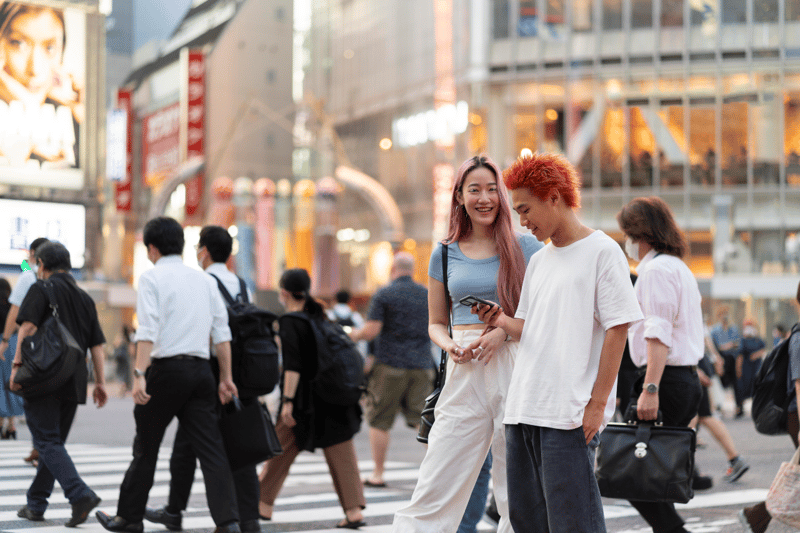
Japan was not spared in the so-called revenge travel spree as foreign travelers try to make up for lost time caused by the travel restrictions during the height of the COVID-19 pandemic, and if the recent Golden Week is a sign of things to come for the nation’s travel, dining, and hospitality industries, the island nation might quickly bring back or even surpass its pre-pandemic arrivals.
As measures against the COVID-19 pandemic gradually decreased, Japan faced an influx of travelers, some of which no longer wear face masks, especially during the recent Golden Week holidays. Travel by train, plane, and expressways reached peak congestion during the first day of the five-day weekend, with more people enjoying longer trips this year, most likely a welcome escape from being on lockdown and restrictions for so long.
Across the country, seats for buses and trains to and from provinces got booked out quickly, and stations were crowded. According to the Japan Railway companies, reserved seats for Shinkansen lines quickly got full, while unreserved sections became overcrowded, with occupancy reaching as high as 180% at the Nagoya Station on the Tokaido Shinkansen Line. Airports were also bustling with travelers, as All Nippon Airways reported fully booked flights from Tokyo’s Haneda Airport, and Japan Airlines reported 90% sold out flights departing from the capital. Travel by land was also not spared as expressways got congested, with a traffic jam as long as 54 kilometers observed near an interchange on the Kanetsu Expressway in Saitama Prefecture.
A Surge of Arrivals
During the start of the cherry blossom season this year, the number of foreign tourists in April was estimated to have matched the 2.9 million visitors in April 2019, before the COVID-19 outbreak. This surge in arrivals became a double-edged sword since it revitalized tourism and related industries in Japan, but it also led to overcrowding in landmarks and some misunderstanding among locals and tourists.
The Japanese tourism industry is very optimistic that 2023 will pick up recovery quickly, with domestic travel agency JTB Corp expecting around 21.2 million arrivals throughout the year, which will put Japan on track to meet the government’s 2030 target of 60 million visitors.
Lifting restrictions, dropping Yen value
The sudden influx of tourists in Japan has been partly attributed to the Japanese government’s decision to reclassify the COVID-19 virus as an infectious disease on par with seasonal flu. The government began to ease restrictions on foreign tourists in October 2022, welcoming 3.8 million new arrivals over the course of the year. That figure is significantly down on the record 31 million arrivals in 2019, of whom around 9.6 million were Chinese, but a way massive improvement on the 245,900 reported in 2021.
Additionally, the government no longer required arrivals to present vaccination records and the COVID-19 tests taken within 72 hours of departure. Random testing of passengers from China was also scrapped, and border controls for all arrivals were lifted prior to the Golden Week. However, the Japanese government started a genomic surveillance program at five major airports, where entrants with symptoms are asked to undergo voluntary tests to detect infections. These steps paved the way for the full normalization of daily activities in Japan, including travel, dining, and accommodation. While tourism in Japan is improving, infectious disease experts advise the elderly and people with comorbidities to continue protecting themselves by wearing masks and taking other countermeasures.
Another factor behind the surge of tourism in Japan is the growing strength of international currencies, particularly from Singapore, Hong Kong, and Malaysia. Most Asian currencies regained strength from China’s reopening and the weakness of the Japanese yen versus the US dollar due to decreased demand in semiconductors and electronics. This growing gap between the strengths of currencies continues to help increase the number of tourists in Japan.
When the Golden Week drew near, room prices at Japanese hotels soared to as high as 50%. Nikkei surveyed 50 hotels with more than 100 guest rooms in Sapporo, Tokyo, Kyoto, Osaka, and Fukuoka and asked to compare the average daily rate for April 29, which is the first day of the Golden Week, to the previous year. It was found that in each city, the rates rose strongly, with none of the respondents reporting any drop. About 20% of the hotels reported an increase of 10-40%, with 60% saying that the average daily rate will climb by at least 50%. Another study conducted by the US hospitality firm STR showed that Japan’s nationwide average room rate in March was 21% higher than before the pandemic in 2019, up by 59% year-on-year. The rising prices are attributed to the sudden upswing in occupancy rates, with many saying they expected an occupancy rate of 70% or more or were almost fully booked.
With the Golden Week already done and the summer season drawing near, the Japanese government and private sectors are facing a revitalization of the travel industry, and are preparing for the next influx of visitors.
Want to know more interesting Asian insights? Check out our other Eye on Asia articles like the emerging post-pandemic trends in the Asia Pacific region, and the Gen Z's consumption of Korean content and products across Southeast Asia.

 Download Panel Book
Download Panel Book


